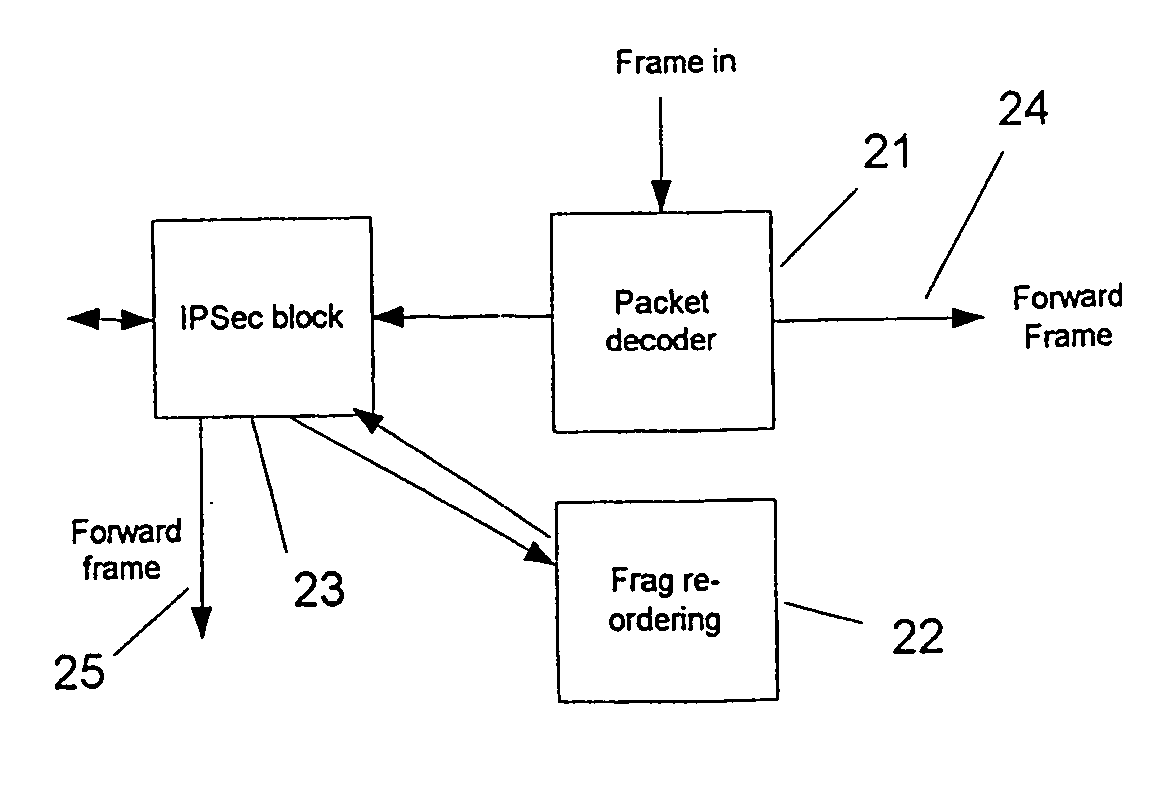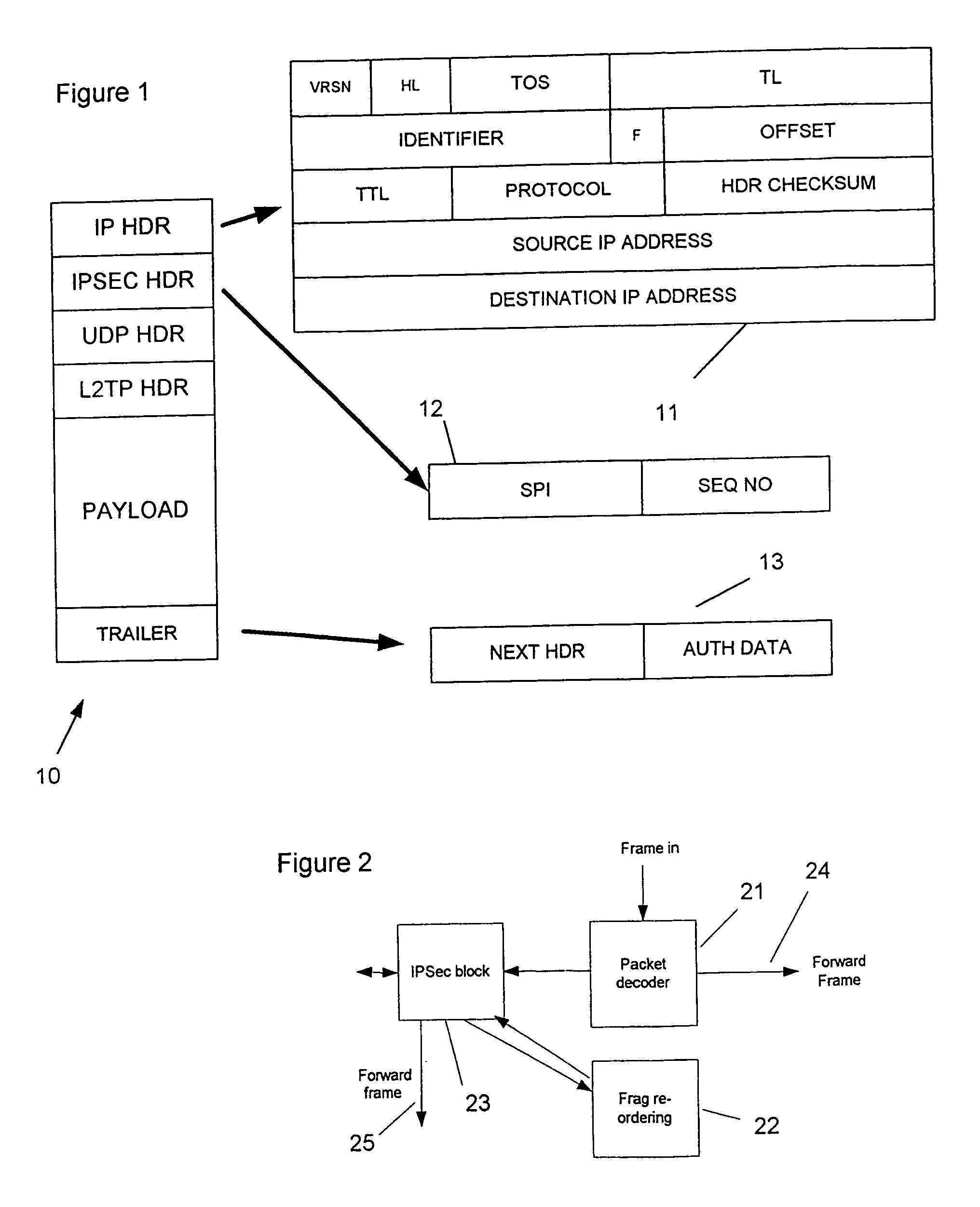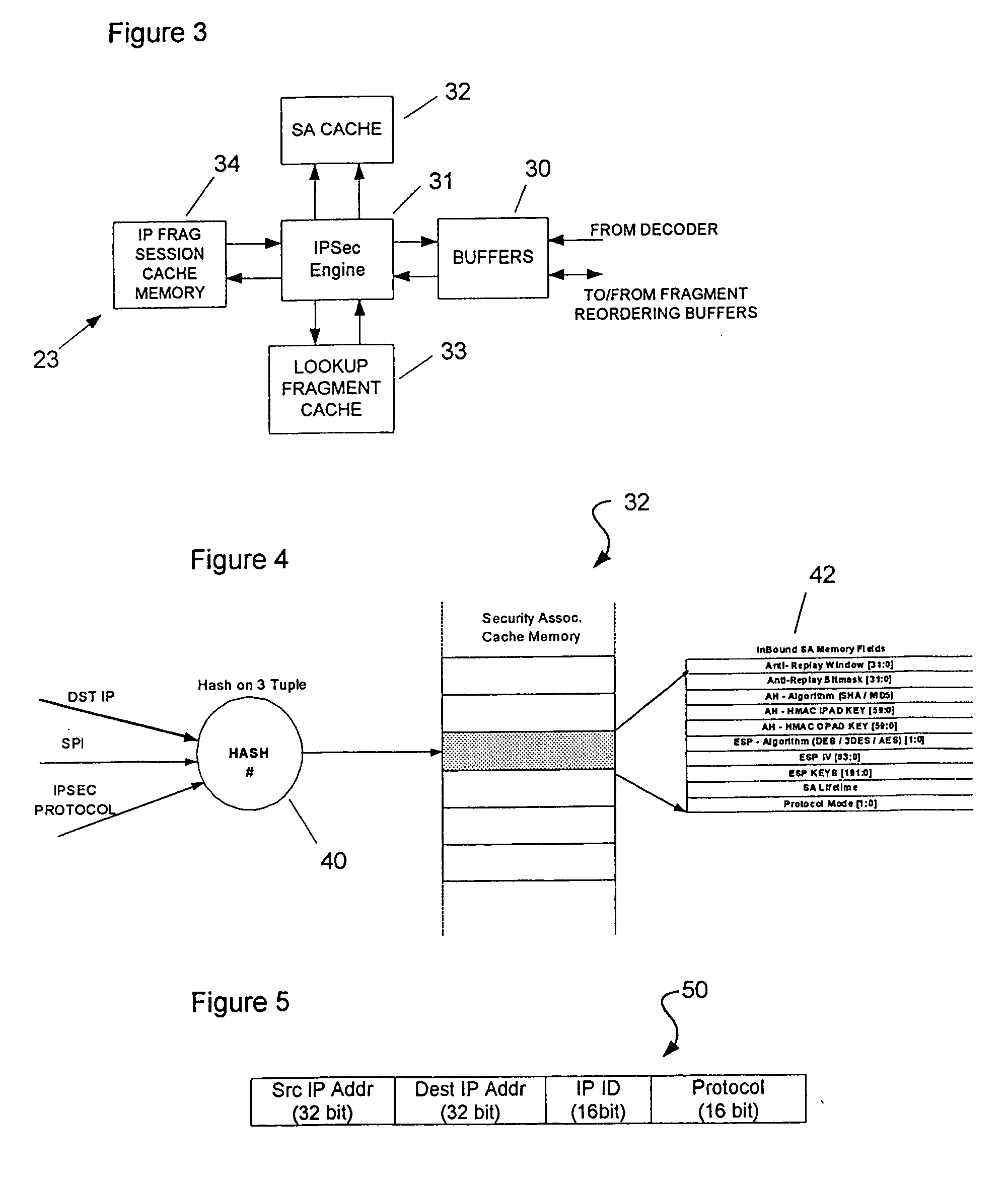Deciphering of fragmented enciphered data packets
a technology of enciphering and data packets, applied in the field of communication and computer networks, can solve the problems of affecting the resale value of fragmented packets, and the inability to encipher fragmented packets
- Summary
- Abstract
- Description
- Claims
- Application Information
AI Technical Summary
Benefits of technology
Problems solved by technology
Method used
Image
Examples
Embodiment Construction
[0027] In FIG. 1 is shown one example of a IP frame of the kind which can be handled by the present invention. Herein, purely for convenience, the term ‘packet’ is employed to refer to an original IP packet on its own and the term ‘frame’ is a generic term used to refer to a datagram which has the same form as a packet but which has a payload that is, or may be, a fragment of the original packet.
[0028] In the present example, the IP frame has an IP header (IP HDR) 11 which is shown in more detail in the expanded diagram on the right. In this example the IP header is followed by an IP security header (IPSEC HDR) 12 which defines the enciphering of an encapsulated message, in this example a UDP datagram comprising a UDP header (UDP HDR) followed by an L2TP header (L2TP HDR) and a payload (PAYLOAD). The frame 10 terminates after a security trailer (TRAILER).
[0029] The example of a UDP datagram encapsulated within the IP frame is selected because a UDP datagram encapsulating an L2TP h...
PUM
 Login to View More
Login to View More Abstract
Description
Claims
Application Information
 Login to View More
Login to View More - R&D
- Intellectual Property
- Life Sciences
- Materials
- Tech Scout
- Unparalleled Data Quality
- Higher Quality Content
- 60% Fewer Hallucinations
Browse by: Latest US Patents, China's latest patents, Technical Efficacy Thesaurus, Application Domain, Technology Topic, Popular Technical Reports.
© 2025 PatSnap. All rights reserved.Legal|Privacy policy|Modern Slavery Act Transparency Statement|Sitemap|About US| Contact US: help@patsnap.com



